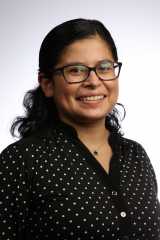Social Determinants of Health, Hospital-level Resources, and Risk of Septic Shock in Pediatric Leukemia

Project Goal:
Project Update 2024:
More and more children with leukemia are being cured of their cancer due to advancements of treatment options. These treatments can have serious side effects, including life-threatening serious infections. Children who experience severe infections while being treated for leukemia can die from these infections. Our group found differences in who gets serious infections by race, ethnicity, and insurance. We found that Black and Hispanic patients are more likely to get life-threatening infections than white patients. Children with Medicaid are more likely to get serious infections than those with private insurance. We think these disparities are signs of social inequality. One way to measure social inequality in health care outcomes is to look at “social determinants of health (SDOH)”. These include household income, poverty, education, neighborhood factors, and access to health care. SDOH can be measured at the individual level or at an area-based level (for example at the neighborhood level). We looked at whether neighborhood SDOH affected the risk of getting a severe infection in children with acute myeloid leukemia (AML). We found no significant association between neighborhood SDOH and severe infections in children with AML. We had these results published this year in the journal Cancer. We will next study the same relationship of neighborhood SDOH and risk of severe infection except now in children with acute lymphoblastic leukemia (ALL). Children with ALL receive most of their treatment in the outpatient clinic compared to children with AML who generally stay in the hospital for most of their treatment. We expect that children who live in neighborhoods with high disorganization will be more likely to have severe infections in children with ALL. Finally, we will also study whether certain hospital characteristics (like hospitals with fewer or lower-paid staff) are more likely to have children get these severe infections.

